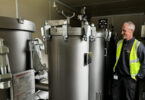Energy is essential to the functioning of drinking water distribution and sanitation services. It is a critical input that has a significant impact on the costs of providing these services. This has an even greater incidence when supply prices are high in many areas, as is currently the case. Energy accounts for between 5% and 30% of total operating costs and can be as much as 40% on occasion.
Any improvements in energy efficiency, achieved through water savings, energy savings or process improvements, translate directly into lower costs and increased economic efficiency.
An energy efficiency plan, based on a study or diagnosis, is vital to achieve energy efficiency in an organization. “However, it is also essential to have an Energy Optimization Plan to ensure continuous improvement,” says José Antonio Martínez, a Water Specialist at Idrica.
The importance of this Optimization Plan lies in the fact that many energy efficiency initiatives are implemented in isolation and are therefore not sustained over time. Thus, the benefits obtained from an energy efficiency plan, such as the reduction of costs and greenhouse gas emissions, prove to be temporary and, in many cases, short-lived. Therefore, it is vital to introduce protocols and methodologies that guarantee that any initial energy efficiency gains are sustained permanently and continuously. This is why it is fundamental to implement an Energy Optimization Plan.
Six implementation stages
The first stage of an Energy Optimization Plan involves collecting basic information. This means the energy data that will condition the analysis of the Energy Optimization Plan’s objectives must be recorded and systematized.
The second stage consists of processing and analyzing the information collected to categorize and sort all the data. Here, computer tools are used to group data, digitalize documents and adapt formats. Based on the information obtained, the facility must be analyzed to identify the energy consumption processes and their relevance so as to generate a quantitative ranking. This data is then used to “define a strategy for the field work, emphasizing the areas that are most relevant from an energy point of view,” Martínez pointed out.
The third stage focuses on data collection and measurements. It requires a field campaign to measure electrical and hydraulic parameters in order to calculate the losses and energy balance of the facility equipment included in the Energy Optimization Plan.
This data can be used to ascertain where there is potential for significant savings and to generate the corresponding improvement proposals. Measurements must focus on setting the baseline for the processes and the facility as a whole. This phase is key, as “correct parameter measurements will determine how good or bad the results are”, the Idrica expert pointed out.
Energy diagnosis is at the core of the fourth stage, and includes assessments of the infrastructure’s energy efficiency, based on previously obtained data, such as the calculation of the losses to obtain the specific balances in each system, and of the energy indicators and their statistical analysis, as well as the drafting of the energy balances, and the analysis of O&M practices.
According to Martínez, “the greatest energy losses occur during the transformation of mechanical energy into hydraulic energy (pump to hydraulic network) which, in some cases, amounts to 40-45%. However, once the energy is sent to the electric motor, it is not uncommon to find pumping systems with losses of up to 60%”. The Idrica specialist also stated that “it is precisely in this 40%-45% range where the opportunities explored below can be found, based on the optimization of hydraulic operations. This is where there are also important opportunities for energy savings”.
The fifth stage centers on the improvement proposals. These measures should optimize efficient energy use and encompass all the potential opportunities for both energy and economic savings, including both low-investment and non-investment measures, as well as those that require significant financial outlay.
In general, the actions outlined in each project aim to monitor and optimize the variables that affect energy consumption and costs. According to Idrica, these initiatives mainly include increasing the efficiency of motors and pumps, reducing losses in electrical installations and, finally, measures related to energy tariffs and the deployment of renewable energies.
Finally, there is the control and monitoring stage. “Once an Energy Optimization Plan has been rolled out, it is vitally important to implement a monitoring protocol to ensure that the actions implemented are continued over time and, secondly, that any system variations are detected,” said José Antonio Martínez.
In this sense, the right tools required to carry out this monitoring must be available. On the one hand, measurement equipment must be installed to guarantee data is procured at the correct intervals. In addition, this data must be processed and analyzed efficiently so that the utility can perform this task as quickly as possible.
Keeping information up to date ensures that changes over time can be analyzed, the effectiveness of the improvement initiatives can be assessed and the need to implement new measures can be detected.
Benefits
Idrica has pinpointed four key benefits from implementing an Energy Optimization Plan.
Firstly, it provides a reliable understanding of the equipment installed and the energy consumption of each facility. It also detects the factors that affect energy consumption, measures the operating point and performance of each piece of equipment to ascertain its efficiency and, finally, it identifies, assesses and organizes the various opportunities for energy savings according to their profitability.
Related articles:
The four stages of wastewater treatment plants







